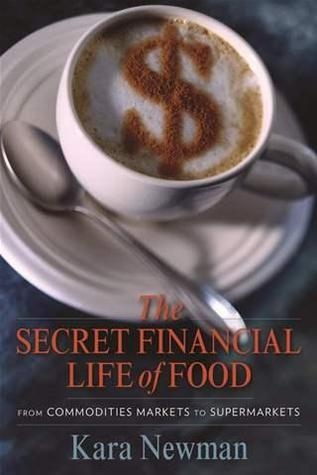The Secret Financial Life of Food: From Commodities Markets to Supermarkets by Kara Newman

C H A P T E R ON E
How Does Commodities Trading Work?
What shall we eat, what shall we drink, and wherewithal
shall we be lighted? Are the three questions
with whose pleasant solution the . . . Exchange charges itself.
HARPER’S NEW MONTHLY MAGAZINE, JULY 1886
This is not a book on how to trade commodity futures; it is a book about
culinary history and the role that the commodities market has played in
shaping culinary history. But before delving into the histories of the various
contracts, it is important first to address three questions: How did the
commodities market evolve into what we know today? How does the modern
commodities market work? And perhaps most important, how does the
trading of food-based commodities influence what we eat and what we pay
for food?
The Evolution of the Commodities Market
Though it is impossible to put a time stamp on the very first commodities
market transaction, many traders like to point out that the concept of grain
“futures” dates all the way back to the days of the Hebrew Bible: Joseph
analyzed the pharaoh’s dream of cattle and crops, discerned that a drought
would come, and diligently went about storing immense amounts of grain.
By the time the famine arrived, Joseph had cornered the grain market,
ultimately becoming a very rich man.
Others pinpoint the birth of the markets as taking place in Osaka,
Japan, in 1730. Feudal lords there established warehouses to store and sell
rice paid to them as land tax by their villagers. In order to protect their
booty from wild fluctuations between harvests, they formed the Dojima
Rice Market, which was set up in the house of a wealthy rice merchant.
There, the merchants gathered, and with shouts and gestures, they negotiated
the price of their “rice tickets.” Ostensibly, this was the world’s first
organized futures exchange.
Meanwhile, still others argue that the open outcry for transactions between
buyers and sellers preceded the Dojima premises by a number of
centuries. Ancient Phoenicians, Greeks, and Romans openly traded options
against the cargoes of incoming and outgoing ships—often laden
with spices (chapter 2). And in the tenth and twelfth centuries, during seasonal
merchant fairs in Brussels, Madrid, and elsewhere, merchants would
gather to loudly and openly negotiate for the future delivery of merchandise.
Regardless of when or where the world’s first true market originated, it
was not until 1826 in England, and two decades later in the United States,
that the traditional open-outcry futures market was established.
Because this book is about trading in the United States, let’s focus on
the first U.S. futures mart: the Chicago Board of Trade (CBOT) in 1848.
Chicago became the trading hub of the United States, as it represented the
great railroad center for moving products grown in the West to the population
centers in the East. In 1848, the CBOT opened its doors for trading in
grain—specifically, wheat—to become the world’s largest futures exchange
during most of its history. Its building, erected in 1885 at La Salle Street and
Jackson Boulevard, became the symbol of Chicago’s commercial vitality.
Just a couple of decades later, in 1860, the New York Produce Exchange
opened for business, and within fourteen years, in 1874, the Chicago
Produce Exchange (later to become the Chicago Mercantile Exchange
[CME]) was formed. The rivalry between the two Chicago exchanges was
particularly fierce; the CBOT was painted as the white-glove grain-trading
granddaddy of the futures market, while the newer CME was considered a
scrappier upstart, a magnet for myriad immigrant groups seeking to make
their fortunes through livestock trade.
Over time, the exchanges would splinter into smaller groups and
consolidate and sometimes splinter off yet again (figures 1 and 2). We’ve
come a long way from the nineteenth-century patchwork of commodities
The Secret Financial Life of Food: From Commodities Markets to Supermarkets by Kara Newman




